-----
Indiana Harbor, located in East Chicago 22 miles south of the city center, was home to the first iteration of the South Shore Line in 1901, when the Chicago and Indiana Air Line railway (C&IAL) was organized as a streetcar running between East Chicago's center and the Harbor itself. The term "air line" refers to lines that are absolutely flat and straight with preference for a shorter route rather than an easier route following traditional land topography. (The infamous Chicago-New York Air Line was slated to be one of these routes, but that insanity will be saved for next month.) The C&IAL originally ran a three-mile line, but by 1904 the company was reorganized into the Chicago, Lake Shore & South Bend Railway (CLS&SB, Old South Shore)
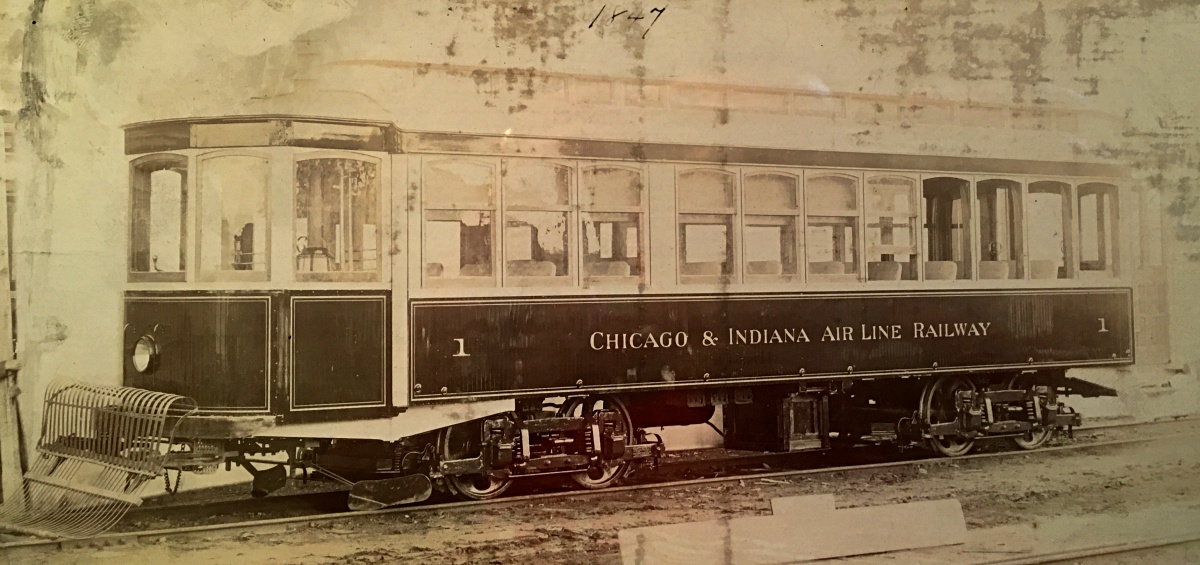 |
| C&IAL No. 1, built by Brill originally for the Monroeville, MA, streetcar system. (Pennsylvania Historical Society) |
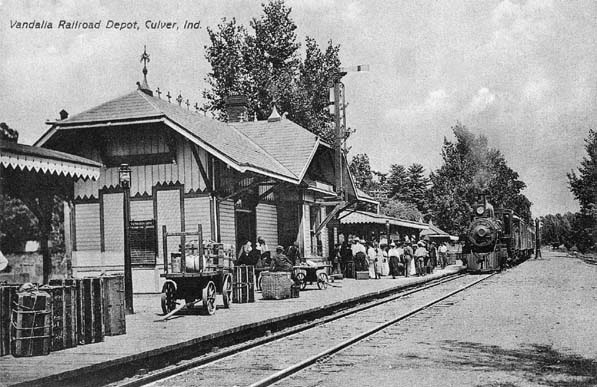 |
| The Vandalia Lines Railroad depot in Culver, IN, year unknown. Huh, that depot shape sure looks familiar... (Railfan Guides) |
 |
| The first Chicago, Lake Shore, and South Bend car reaches South Bend, a few days ahead of schedule.June 30, 1908. (The History Museum) |
Construction between Michigan City and South Bend was fraught with challenges, as the established Northern Indiana Railway regularly hassled South Shore track gangs, thieved supplies, and even brought in other railroad track gangs to block their way. Nevertheless, the line reached South Bend by 1908 and held its first scheduled service on July 1. This opening was overshadowed by further nefarious elements that put the Old South Shore in danger. Two wars soon erupted around it, the first being Thomas Edison's and George Westinghouse's current war and the second being the new transportation war with the first Model T Ford emerging from its Detroit factory by December. South Shore chose to back Westinghouse's expensive and unstable 6600V AC system, which at the time was stated to be cost effective. It ended up being a major headache for the Old South Shore, as the AC systems meant cars were heavier and expensive and cities like Gary and Michigan City mandated the use of 700 volts AC for safety reasons.
 |
| The Wreck at Shadyside, June 19, 1909. Eastbound Car 73 is at left, Westbound Car 3 is at right. |
By 1924, Samuel Insull was looking to expand his utilities empire into Indiana via the Indiana Dunes, and had a keen eye on the now-nosediving South Shore around this time. When the Cleveland Trust Company was found to still hold the original construction bonds of some $9.5 million dollars ($139 million today), Insull had the railway appraised and found price had deprecated to $6.4 million ($93 million today). Cleveland Trust agreed to Insull's deal that he would purchase the original nominal debt for a 60% stake in the company. Upon the transactions closure on June 29, 1925, Samuel Insull's Chicago South Shore & South Bend was born, better known as the South Shore Line we know today. He then immediately got to work on the railway by laying new ballast, heavier rails, and better wires to make his new crown jewel the first and fastest in his system.
The Insull era brought an order of 15 new coach and 10 new coach-baggage cars from Pullman to the South Shore by 1926. By this point, the old South Shore had fielded up to 73 wooden interurban cars and trailers from the Niles Car Company in Ohio in 1908, and from the Kuhlman Company in 1918. Under Insull's direction, the railroad was converted to 1500V DC, a standard interurban voltage of the time, and the new cars generated a generous 840 horsepower from its four Westinghouse traction motors. The change in voltage also allowed them to run out of the Illinois Central's Randolph Street terminal without needing to change an engine. To meet growing demand for more cars, Standard Steel was selected to fill in the remaining order of 18 cars by 1929, with the roster rounding out to 64 steel cars. Thanks to all these changes, passenger numbers more than doubled and the South Shore was finally seeing a fare-paying profit.
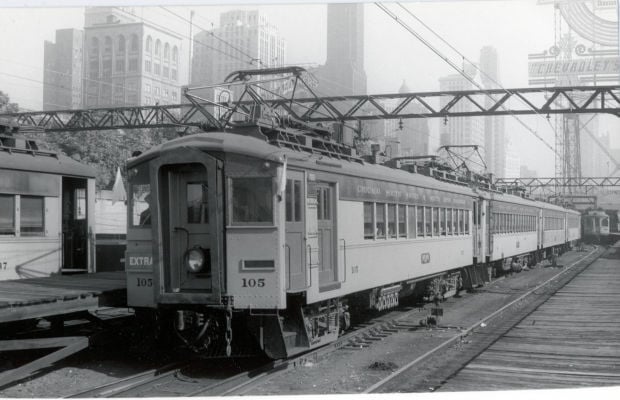 |
| A South Shore train, led by Car 105 (originally 5) runs extra with a few trailers, 1930s. (Calumet Regional Archives, IU Northwest) |
 |
| South Shore No. 900, originally Illinois Central 10000, sits stationary in Michigan City, 1964. (Chuck Zeiler) |
However, the biggest locomotives to run on the South Shore ended up being the massive General Electric 800-series electric locomotives which were dropped on South Shore's doorstep in 1949. These were originally built for the Soviet Railways (SZD) in 1947 as part of a larger order of 20 GE locomotives to run on the South Ural Railroad. No factory in Russia could stand the test of such a large order of locomotives, so GE was contracted to provide the order. As they were being built, however, the Cold War happened and they ended up stuck in the US while Soviet engineers had to design their own equivalent. 12 went to the Milwaukee Road, who offered to buy all 20, and they ran on the Olympian Hiawatha line between Harlowton, MT and Avery, ID (the longest continuously electrified rail line in the world at 370 miles). Five were sold to the Companhia Paulista de Estradas de Ferro (FEPASA) in Brazil and were known as "Russas", running on a 5'3" broad gauge.
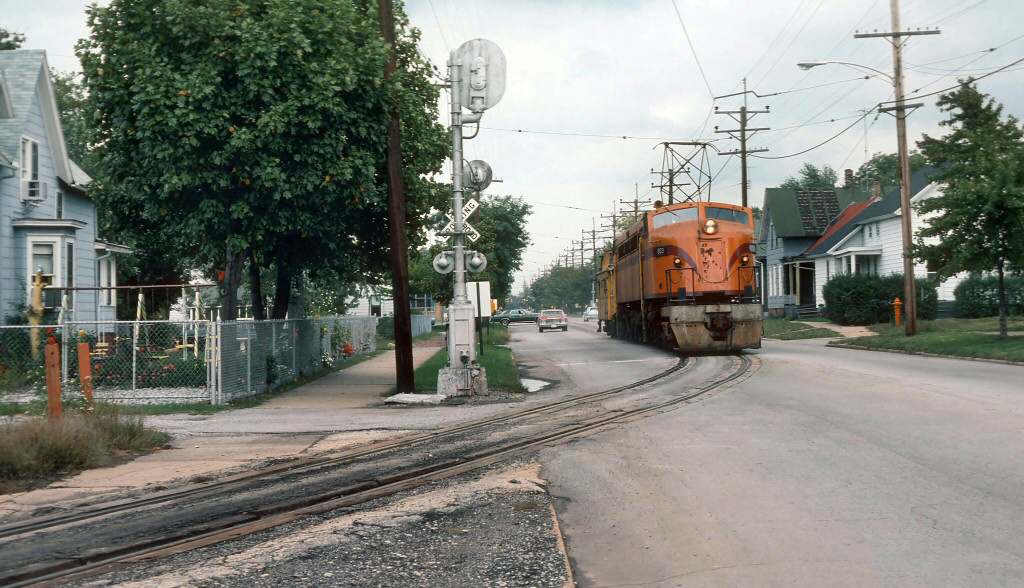 |
| South Shore No. 803 runs light down a street in Michigan City, 1977. (Gary Morris) |
Wait, hang on my editor's telling me something. What?
Yes, I know this post is titled "Trolley Thursday."
Yes, I'm aware I'm talking about heavy rail freight, but it's still electric!
Ok, fine. I get it, I waffled on the freight a bit too long. Let me just... regain my bearings...
 |
| Depicted: This entire post going off the rails. Actual history is Motorman Lloyd Powers lost his power and brakes and struck several cars and a truck before coming to rest in the loading dock of Lasalle Salvage Company. Powers jumped clear, 9 people were seriously injured. (Jack Frame) |
 |
| Samuel Insull did plenty to drum up ridership on the South Shore, including commissioning a series of posters from artist Oscar Rabe Hanson in 1925. (Posters Plus) |
Samuel Insull's control of the South Shore came to an end in 1932, but by that time it was held as a world-class, award-winning interurban system. It's the only interurban system I know of where the secondary bus systems, under the Shore Line Motor Coach Company, funneled more money into the trains than vice versa. After Insull's utilities took a massive hit in the Great Depression, the South Shore's new receivers had to hold its head above water again to get it through the 1930s. It exited receivership in 1938 and began focusing more on freight, just in time for World War II.
The War brought with it a renewed demand for passengers that South Shore couldn't keep up with, until a savvy idea was whispered around the Michigan City shops: instead of buying new cars which put the South Shore into even more operational jeopardy, why not just... lengthen them? With renewed vigor, most of the 64 Pullmans and Standard Steels underwent invasive surgery that added 17.6 feet of new seating to the cars between 1946 and 1948. These lengthened cars also received taller roof lines at either end to better support the pantographs, giving them an odd sagging profile. Nevertheless, by the 1950s freight was king on the South Shore, to the point where streets in East Chicago were getting clogged hourly by long freight trains. This changed in 1956 when a grade-separated bypass was constructed to ease bottlenecking.
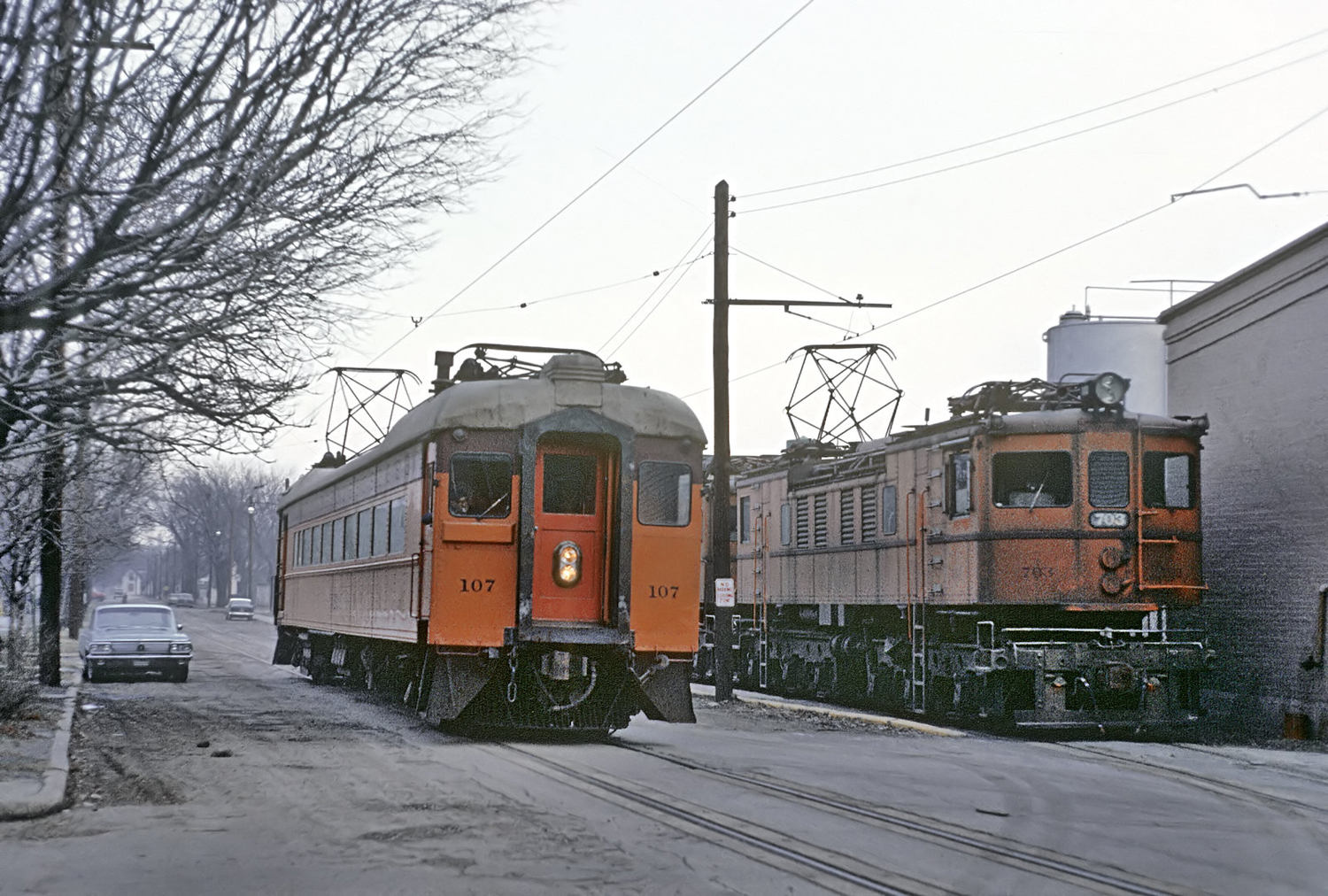 |
| South Shore No. 107, with new unique roof profile, rolls past one of the ex-NYC R2s on Orange Street in South Bend, ID. The date is January 27, 1964, and the big electric is doing some street switching. (Roger Puta) |
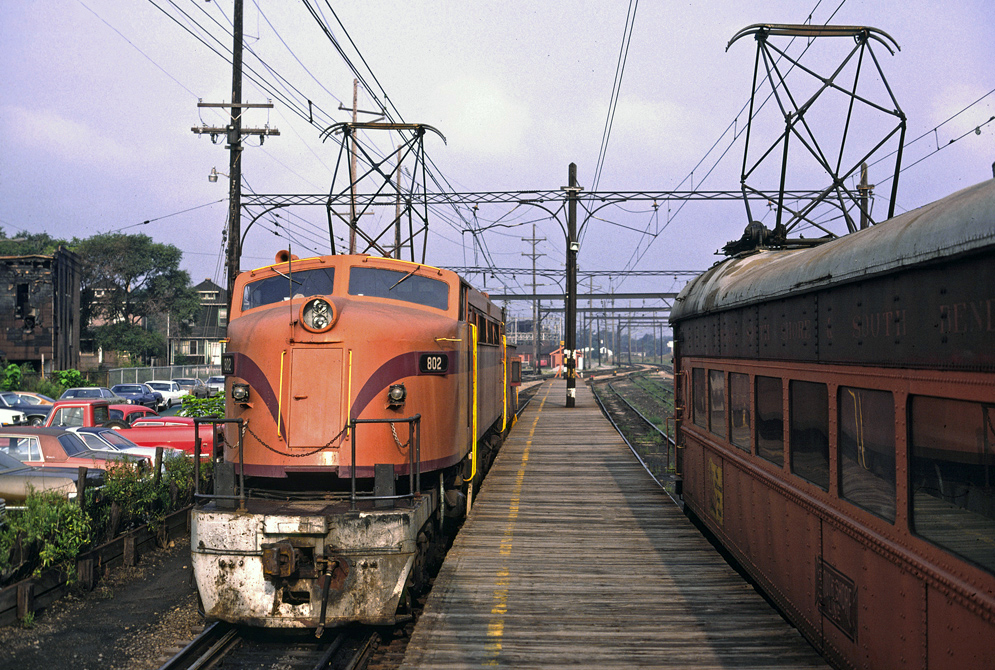 |
| It's August 1980, and the South Shore is about to end. "800" 802 travels light with a caboose through Gary, ID, while a passenger train readies to depart. (Drew Jackisch) |
Today, the biggest vanguards of the South Shore Line are the Illinois Railway Museum (IRM) and the East Troy Electric Railroad (ETRR). IRM owns one of the two remaining "800s", 803, which runs in service along with line car 1100, freight box 504, and six original Pullman cars. East Troy owns six original steel interurbans, two of which were converted to dining cars and run regularly on their dinner trains. The other remaining 800, 802, is now preserved at the Lake Shore Railway Historical Museum in North East, Pennsylvania after originally being preserved at the Baltimore Railroad Museum in Maryland. The South Shore continues its record legacy of nonstop operations as the NICTD's South Shore line, but that's another story.
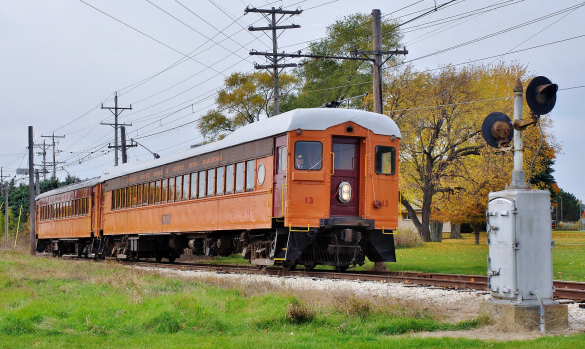 |
| Two of East Troy Electric's six South Shore cars in operation. Notice the differing roof profiles. (East Troy Electric Railroad Museum) |
-----


The last South Shore Line Insult era car last ran in August, 1983, not 1982.
ReplyDeleteSorry, the spell check..."Insull era cars"
ReplyDelete